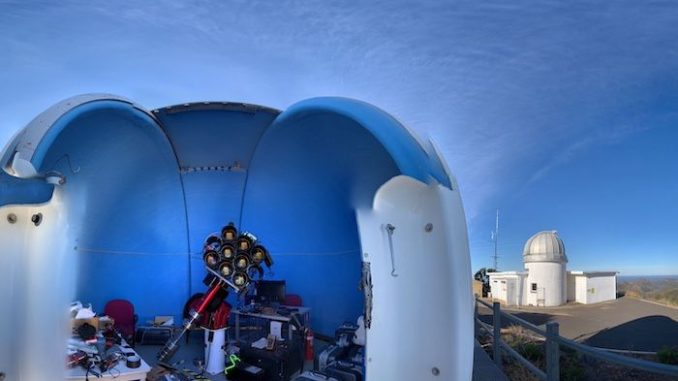
An innovative telescope design has proven successful for daytime sky observation, opening new doors for uninterrupted observation of the cosmos.
Astronomers from Macquarie University in Australia have developed a new technique using light filters on the school’s multi-lens Huntsman telescope. Originally designed for ultra-sensitive night sky observations, the telescope has demonstrated the ability to accurately measure stars, satellites and other targets in broad daylight.
‘People have tried to observe stars and satellites in daytime optical wavelengths for centuries, but it’s been very difficult to do that,” said Sarah Caddy, who helped design and build the Huntsman Telescope. a statement from the university. “Our tests show that the Huntsman can achieve remarkable results in daylight.”
Related: The 15 skywatching events you can’t miss in 2024
The Huntsman Telescope, located at the Siding Springs Observatory in the town of Coonabarabran in New South Wales, combines a astronomy camera and astromechanical focusing equipment with a unique array of 10 highly sensitive 400mm Canon lenses. The lenses are oriented so that they work in parallel to monitor the same part of the sky, capturing thousands of images with short exposure times per second, which are then processed by a connected camera, the statement said.
Generally, sunlight drowns out faint planets, stars and galaxies, so ground-based observatories are limited to nighttime viewing. However, by using special broadband filters from the Huntsman Telescope, the astronomers were able to block out most of the daylight while still allowing specific wavelengths of celestial bodies to pass through.
The researchers tested their filtering method on a single-lens mini Huntsman pathfinder telescope for months to study optimal exposure times, observation timing, and precise target tracking through atmospheric turbulence.
One of the researchers’ targets was the red supergiant star Betelgeuse, located about 650 light-years from Earth. This star has been in the spotlight lately since he… sudden change in brightness in 2019. This activity, believed to be the result of a massive ejection of material into space that created a dust cloud that temporarily obscured the star’s light, suggests that the star is about to explode in a supernova.
“This breakthrough paves the way for uninterrupted long-term studies of stars like Betelgeuse as they undergo powerful outbursts near the end of their lives, ejecting enormous amounts of stellar material in the final phase of the cosmic cycle of rebirth,” said Lee Spitler. author of the recent study and associate professor at Macquarie University, said in the statement. “Astronomers love it when stars disappear in the Milky Way supernova because it can tell us so much about how elements in the universe form.”
Daytime observations also enable continuous monitoring of satellites, space debris and other artificial objects orbiting Earth to help avoid potentially damaging collisions.
“With approximately 10,000 active satellites already orbiting the planet and plans to launch another 50,000 low Earth orbit satellites over the next decade, there is a clear need for dedicated day and night telescope networks to continuously detect and track satellites,” said Caddy, lead author of the recent study using Huntsman for daytime observations. “Daytime astronomy is an exciting field , and with Advances in camera sensors, filters and other technologies, we’ve seen dramatic improvements in the sensitivity and precision achievable under clear-sky conditions.”
Their findings were published on May 20 in the publications of the Astronomical Society of Australia.
Leave a Reply